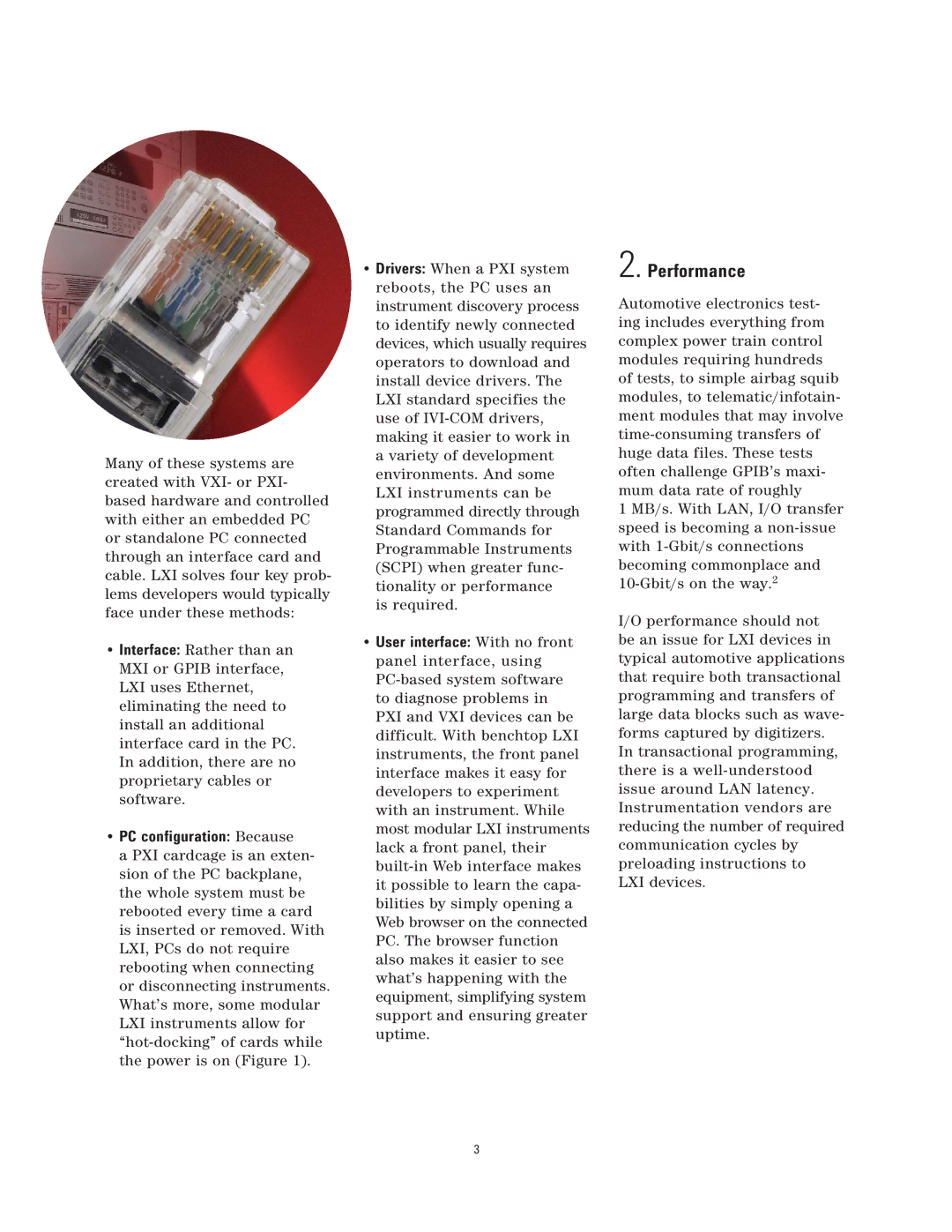
Many of these systems are created with VXI- or PXI- based hardware and controlled with either an embedded PC or standalone PC connected through an interface card and cable. LXI solves four key prob- lems developers would typically face under these methods:
•Interface: Rather than an MXI or GPIB interface, LXI uses Ethernet, eliminating the need to install an additional interface card in the PC. In addition, there are no proprietary cables or software.
•PC configuration: Because
a PXI cardcage is an exten- sion of the PC backplane, the whole system must be rebooted every time a card is inserted or removed. With LXI, PCs do not require rebooting when connecting or disconnecting instruments. What’s more, some modular LXI instruments allow for
•Drivers: When a PXI system reboots, the PC uses an instrument discovery process to identify newly connected devices, which usually requires operators to download and install device drivers. The LXI standard specifies the use of
is required.
•User interface: With no front panel interface, using
2. Performance
Automotive electronics test- ing includes everything from complex power train control modules requiring hundreds of tests, to simple airbag squib modules, to telematic/infotain- ment modules that may involve
1 MB/s. With LAN, I/O transfer speed is becoming a
I/O performance should not be an issue for LXI devices in typical automotive applications that require both transactional programming and transfers of large data blocks such as wave- forms captured by digitizers. In transactional programming, there is a
3
